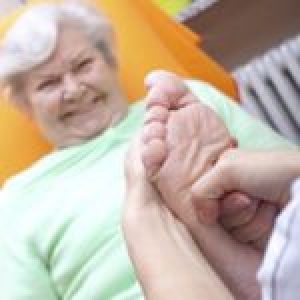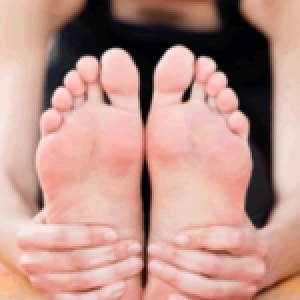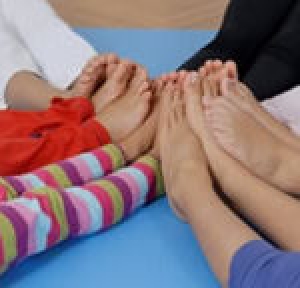Items filtered by date: October 2016
Ankle Foot Orthotics for Athletes
Ankle and foot orthotics, known as AFOs, are custom-made inserts. They are shaped and contoured to fit inside a shoe and used to correct an irregular walking gait or provide cushioning. Orthotics come in a variety of different models and sizes, including over the counter and customizable variants. Customizable ones should be prescribed through a podiatrist who specializes in customized footwear and orthotics design and management.
AFOs are often used by athletes including track and field runners, cyclists, professional dancers, ice skaters, and even golfers. They benefit a lot from custom made AFOs by preventing injuries from occurring and providing cushioning to keep pain levels down to a minimum. Ankle foot orthotics allows for the correct positioning of the feet. Orthotics also act as shock absorbers to help keep pressure and stress off the foot and ankle. They can also relieve back pain and hip pain while restoring balance and improving an athlete’s performance.
Orthotics help alleviate pain by controlling the movement of both your feet and ankles. They are custom designed by a podiatrist to help treat foot problems. These problems include flat feet, spurs, arthritis of the ankle or foot, ankle sprains, weakness, and drop foot, a condition in which the patient cannot raise their foot at the ankle joint.
With custom orthotics, a patient will go through a complete examination of the foot and ankle. This is followed by the ankle and foot being cast and fitted for the proper orthotic. Depending upon the final result of the tests, a stretching treatment is created with the specific shoe fitting in mind. After a patient has been fitted to the shoes, adjustments can be made in order to get the perfect fit. Evaluations are then usually set up to monitor the patient in the coming weeks to see how they are adjusting.
AFOs are also available over the counter and are more common than custom fit ones. Athletes that have generally low aches and pains in the foot, ankle, or lower back area can use an over the counter version of these orthotics. Weight is distributed evenly throughout the bottom of the foot thanks to the arch support they give. However, when an injury or ailment occurs, it is usually not enough to try and remedy it with an over the counter version. In either case, a podiatrist will be able to offer the best advice and treatment when it comes to foot and ankle orthotics.
Arch Support and Your Feet
It is no secret that high heels are bad for the feet. The human foot is not designed to wear extremely high heels, so they are being forced to adjust to the unnatural height difference. Additionally, women who have flat feet are more susceptible to foot problems from a lack of arch support. Examples of these feet problems are arch pain, foot cramps, tired feet, and leg fatigue. Over the counter arch products are a solution to the lack of arch support in many types of footwear, and may help prevent foot problems in the future.
If you are having discomfort in your feet and would like to try orthotics, contact Dr. Kenneth Donovan from Advanced Care Foot and Ankle. Our doctor will attend to all of your foot and ankle needs.
What are Orthotics?
Orthotics are inserts you can place into your shoes to help with a variety of foot problems such as flat feet or foot pain. Orthotics provide relief and comfort for minor foot and heel pain, but can’t correct serious biomechanical problems in your feet.
Over-the-Counter Inserts
Orthotics come in a wide variety of over-the-counter inserts that are used to treat foot pain, heel pain, and minor problems. For example, arch supports can be inserted into your shoes to help correct over arched or flat feet, while gel insoles are often used because they provide comfort and relief from foot and heel pain by alleviating pressure.
Prescription Orthotics
If over-the-counter inserts don’t work for you, or if you have a more severe foot issue, it is possible to have your podiatrist prescribe custom orthotics. These high quality inserts are designed to treat problems such as abnormal motion, plantar fasciitis, and more severe heel pain. They can even be used to help patients suffering from diabetes by treating foot ulcers and painful calluses, and are usually molded to your feet individually, which allows them to provide full support and comfort.
If you have any questions please feel free to contact one of our offices located in Warren, Livingston, and Toms River, NJ. We offer the newest diagnostic and treatment technologies for all your foot and ankle needs.
If you have any questions please feel free to contact one of our offices located in Easton, PA. We offer the newest diagnostic and treatment technologies for all your foot and ankle needs.
Exercise for Your Feet
Whether your feet are over-worked or under-worked, chances are they could benefit from some special attention. Even those who exercise regularly probably do not spend any time strengthening their feet. This can be just as rewarding as strengthening the rest of the body, since the health of your feet affects the health of the rest of the body as well, especially the ankles, legs, and spine.
For those who might not have any idea on how a foot-specific exercise might be conducted, there are several workouts that are fairly easy to perform in the comfort of ones’ home. One of the easiest is the toe rise, also known as the tip-toe. This exercise involves standing on the tip-toes for a count of 15 then resting the feet on the ground. This process should be repeated a minimum of three times a day in order to strengthen the feet.
Toe pick-ups strengthen the feet by working them in a very different way. In this exercise, small items are picked up using the toes in order to strengthen the muscles on the upper part of the feet. Once again three sets should be performed, with the item in question being held for 15 seconds then dropped. Items that may be picked up using the feet include marbles and even stationery, which works wonders for the toes and the surrounding muscles.
Yet another simple workout is the ankle pump. This can be done either upwards or downwards, but for the workout to be most effective both can be incorporated into the routine. As the term suggests, this involves lifting the foot off the floor and flexing the toes either towards the shin or towards the ground. This movement puts the feet and ankles through a large range of motion which works the muscles.
Last but not least, feet should be stretched so that the muscles can relax and recuperate. This can be done by placing both feet off of the floor and bracing oneself against the wall at a 45 degree angle. This ensures that the feet and ankles are adequately stretched once the workout is complete.
In short, giving the feet a good workout every now and then is important in order to avoid problems such as plantar fasciitis. It’s also important to warm-up or cool-down after running or vigorous walking. Foot exercises may be followed by a good foot massage. This encourages circulation in the feet as well as muscle relaxation.
Exercises to Strengthen Your Feet
The way that the foot interacts with the ground influences how the entire body functions. Although most people have weak feet, it is not impossible to strengthen them with exercise. One simple exercise that will help strengthen your feet is “toe spreading”. In order to do this exercise, spread your toes wide along the floor and try to space them out evenly. Close your toes again, and repeat this exercise ten times. Additionally, you should also make sure you are positioning your foot correctly when you are working out. For example, when doing lunges, you should always evenly distribute the weight you are putting on your front foot.
Exercising your feet regularly with the proper foot wear is a great way to prevent injuries. If you have any concerns about your feet, contact Dr. Kenneth Donovan from Advanced Care Foot and Ankle. Our doctor can provide the care you need to keep your pain free and on your feet.
Exercise for Your Feet
Exercise for your feet can help you to gain strength, mobility and flexibility in your feet. They say that strengthening your feet can be just as rewarding as strengthening another part of the body. Your feet are very important and often we forget about them in our daily tasks. But it is because of our feet that are we able to get going and do what we need to. For those of us fortunate not to have any foot problems, it is an important gesture to take care of them to ensure its good health in the long run.
Some foot health exercises can include ankle pumps, tip-toeing, toe rise, lifting off the floor doing reps and sets, also flexing the toes and involving the shins may help too. It is best to speak with your doctor regarding how to do these fitness steps and how often is right for you. Everyone’s needs and bodies are different and it varies from individual to individual to determine what should be done for you to maintain strength in your feet.
Once you get into a routine of doing regular exercise, you may notice a difference in your feet and how strong they may become.
If you have any questions please feel free to contact one of our offices located in Warren, Livingston, and Toms River, NJ. We offer the newest diagnostic and treatment technologies for all your foot and ankle needs.
Diabetic Foot Care
Millions of people are affected by diabetes each year. Diabetes damages blood vessels in all parts of the body, especially the feet. The legs and feet may develop slow blood flow, which causes neuropathy, or nerve damage. Once a diabetic patient develops neuropathy, it is important that the feet are well taken care of. Otherwise, the lower limbs may have to be amputated. This only happens in drastic cases, but it shows how seriously diabetic foot care should be taken.
It is very important to always wash and dry the feet thoroughly, especially in between the toes, if you’re a diabetic. Secondly, examining your feet and toes for redness or sores must be done, even if you do not feel pain. You may also want to examine your feet from the bottom. Try to avoid wearing colored socks to prevent infections that may occur from the dye. Well-fitting socks are also highly recommended.
A diabetic’s physician should always monitor their blood levels to test how well blood sugars are being maintained. In addition to giving advice about everyday eating habits and foot care, a physician may prescribe medicine to help with the diabetic patient’s neuropathy. It is also advised to see a podiatrist if experiencing any feet conditions. Toenails may also need to be taken care of by a podiatrist. This prevents patients from cutting too deeply around their cuticles, which can lead to infection.
A person can take care of their feet at home by following the instructions of their physician. Using creams on one’s feet is also an effective way to heal dryness. Proceed with caution when using tools to remove calluses, as severe diabetics may not be able to feel pain on their feet. If any complications arise do not hesitate to contact a podiatrist.
On a daily basis, diabetic feet must be checked. If you are ever concerned about something, contact your health care professional. You never want to wait until a wound becomes too severe to treat. If left untreated, gangrene may develop. Gangrene is a serious infection that can lead to sepsis or amputation. It is also important for diabetics to be on the lookout for ulcers. Ulcers are sores that develop from tissue loss on the skin. They can be quite painful and require intensive treatment. Early treatment and everyday inspection are imperative to staying healthy.
Diabetes Can Affect Foot Health
According to research, “between 2010 and 2012, the number of American patients newly diagnosed with diabetes surpassed 3 million.” Not only can diabetes take a toll in the form of medical expenses, but diabetes can also lead to severe complications such as foot infections, foot ulcers, and even foot amputation. Older patients in particular are at a higher risk of being prone to these conditions. Foot problems caused by diabetes can be prevented with proper foot care, education, routines, treatments, and regularly scheduled visits to your podiatrist for foot exams. Podiatrists play a large role in ensuring the continual health of their diabetic patients
Diabetic foot care is important in preventing foot ailments such as ulcers. If you are suffering from diabetes or have any other concerns about your feet, contact Dr. Kenneth Donovan from Advanced Care Foot and Ankle. Our doctor can provide the care you need to keep your pain free and on your feet.
Diabetic Foot Care
Diabetes affects millions of people every year. Diabetes can damage blood vessels in many parts of the body, including the feet. Because of this, taking care of your feet is essential if you have diabetes, and having a podiatrist help monitor your foot health is highly recommended.
The Importance of Caring for Your Feet
- Routinely inspect your feet for bruises or sores.
- Wear socks that fit your feet comfortably.
- Wear comfortable shoes that provide adequate support.
Patients with diabetes should have their doctor monitor their blood levels because blood sugar levels play such a huge role in diabetic care. Monitoring these levels on a regular basis is highly advised.
It is always best to inform your healthcare professional of any concerns you may have regarding your feet, especially for diabetic patients. Early treatment and routine foot examinations are keys to maintaining proper health, especially because severe complications can arise if proper treatment is not applied.
If you have any questions please feel free to contact one of our offices located in Warren, Livingston, and Toms River, NJ. We offer the newest diagnostic and treatment technologies for all your foot and ankle needs.
Ingrown Toenail Care
An ingrown toenail is caused when a toenail grows sideways into the bed of the nail, causing pain and swelling. Sometimes this can become infected causing drainage and may become serious.
There are many risk factors that can predispose a person to this common condition. Cutting your nails too short, participating in sports, diabetes, being overweight, or having a fungal infection of the toe can all cause ingrown toe nails. Many people are genetically prone to ingrown nails and it can often be related to genetics. Often the problem can come from wearing ill-fitting shoes, or even from shoes that keep the feet slightly damp.
There are some things that you can do to prevent and treat these painful problems. Letting your toe nails grow a little longer will help prevent this condition. If you do develop an ingrown nail, soaking the toe in warm water will help prevent infection and lessen pain. You may want to add antibiotic soap or Epsom salts to the water. This will help to prevent infection.
Some experts also recommend placing small pieces of cotton under the affected part. This will help the toenail to grow up instead into in your nail bed. Resting with your feet up can reduce swelling and redness.
If your pain is so severe that it keeps you from everyday activities, it is time to see your podiatrist. Also, if you see a red streak running up your leg, or if your infection is spreading, see a podiatrist immediately. There are many quick treatments that can lessen your pain and have you walking with comfort
One method of treating an ingrown toenail involves using a Band-Aid. Wrapping the affected toe with a Band-Aid will prevent infection and also keep the nail from growing out at painful angles.
If your podiatrist feels it is necessary, he or she may make a small incision and remove part of your toe nail. Medication will be placed in the nail bed to prevent re-growth of the problem nail parts. This will be done under local anesthesia and should lessen your discomfort in no time. You will be advised to stay off your foot for a day or so, but can then carry on normal activities.
Take care of your feet; you have many steps to take in your life. Walking in comfort should be a priority for a lifetime of healthy living.
How to Prevent Ingrown Toenails
Ingrown toenails occur when “the nail plate edge digs into the adjacent nail fold (soft tissue around the border of a nail),” leading to symptoms of inflammation and even infection. Avoid wearing shoes that are too tight that can put pressure on the nails, and avoid trimming your nails improperly. If your toenails are prone to curving or becoming brittle, this can also lead to an ingrown toenail. Treating your ingrown toenails involves gently filing the nail edge away from your skin after soaking your toe in warm water.
Ingrown toenails can become painful if they are not treated properly. For more information about ingrown toenails, contact Dr. Kenneth Donovan from Advanced Care Foot and Ankle. Our doctor will answer any of your foot- and ankle-related questions.
Ingrown Toenails
Ingrown toenails occur when a toenail grows sideways into the bed of the nail, causing pain, swelling, and possibly infection.
Causes
- Bacterial infections
- Improper nail cutting such as cutting it too short or not straight across
- Trauma to the toe, such as stubbing, which causes the nail to grow back irregularly
- Ill-fitting shoes that bunch the toes too close together
- Genetic predisposition
Prevention
Because ingrown toenails are not something found outside of shoe-wearing cultures, going barefoot as often as possible will decrease the likeliness of developing ingrown toenails. Wearing proper fitting shoes and using proper cutting techniques will also help decrease your risk of developing ingrown toenails.
Treatment
Ingrown toenails are a very treatable foot condition. In minor cases, soaking the affected area in salt or antibacterial soaps will not only help with the ingrown nail itself, but also help prevent any infections from occurring. In more severe cases, surgery is an option. In either case, speaking to your podiatrist about this condition will help you get a better understanding of specific treatment options that are right for you.
If you have any questions please feel free to contact one of our offices located in Warren, Livingston, and Toms River, NJ. We offer the newest diagnostic and treatment technologies for all your foot and ankle needs.
Every Day Foot Care
Our feet are important in our everyday lives. The problem is that we tend to neglect them. When this becomes a habit, it can cause significant trouble. Ignoring foot problems can mean pain, limited mobility, and expensive doctor’s visits. On the other hand, if feet are cared for and looked after regularly, they will perform without pain or complication.
Routine hygiene is the most basic way to care for the feet. Wash and dry them thoroughly daily. Remember to get between the toes and keep the toenails trimmed and short. If the feet feel dry or there are signs of dryness or cracking, use a moisturizer designed for the feet.
When using moisturizer on the feet, try to avoid applying between the toes. If cream or lotion sits too long, they can cause fungal and bacterial growth. When moisturizer is used between the toes, it can also cause the skin to soften too much.
Shoes are also an important aspect of foot care. When one is picking out shoes, make sure they are the correct size. Shoes need to be snug, but not too tight. On the other hand, if shoes are too loose they can cause foot problems as well. It is highly recommended that shopping for new shoes be done later in the day. The reason for this is that the feet will have settled and swelled to their full size by then. To keep your feet at their most healthy, avoid wearing high heels or flip flops too often. Instead, choose shoes that are good for your feet. Good shoes pad the soles of your feet and support the arches and ankles.
Socks should also be worn daily with closed-toe shoes. They may feel hot during the summer months, but they absorb sweat and moisture off the feet. Without socks, the build-up of sweat in a closed-toe shoe can cause fungal problems and athlete’s foot.
The best thing to remember in every day foot care is that shoes do make a difference. If you spend a lot of time on your feet, make sure that your shoes show no signs of wear. Shoes should offer ample support for the arches and the overall foot. Additionally, try to make foot cleaning and maintenance a daily habit. If you keep these things in mind, your feet will stay healthy and safe.
Tips for Comfortable Feet
Aching feet can be very troublesome and distracting while on the job. Fortunately, there are some tips you can use to make your feet more comfortable. The first tip is to buy your shoes in the afternoon, because that is when feet swell the most. There should be about one centimeter of space between your longest toe and the end of the shoe. Another tip is to make sure your feet are moisturized. However, you should avoid putting moisturizer between your toes, because that may lead to athlete’s foot. Lastly, you should not ignore pain in your feet. If you are experiencing a constant pain that will not go away, you should go see a podiatrist for help.
Every day foot care is very important to prevent infection and other foot ailments. If you need your feet checked, contact Dr. Kenneth Donovan from Advanced Care Foot and Ankle can provide the care you need to keep you pain-free and on your feet.
Every Day Foot Care
Often, people take care of their bodies, face and hair more so than they do for their feet. But the feet are a very important aspect of our bodies, and one that we should pay more attention to. After all, without our feet, we would not be able to perform most daily tasks. It is best to check your feet regularly to make sure there are no new bruises or cuts that you may not have noticed before, for example.
For dry feet, moisturizer can easily be a remedy and can be applied as often as necessary to the affected areas. Wearing shoes that fit well can also help you maintain good foot health, as well as making it easier to walk and do daily activities without the stress or pain of ill-fitting shoes, high heels, or even flip flops.
Also, wearing clean socks with closed shoes is important to ensure that sweat and bacteria do not accumulate within the shoe. Clean socks help to prevent athlete’s foot, fungi problems, bad odors, and can absorb sweat.
If you have any questions please feel free to contact one of our offices located in Warren, Livingston, and Toms River, NJ. We offer the newest diagnostic and treatment technologies for all your foot and ankle needs.





